But Can It Run Crysis? 10 Years Later
For Crysis' 10th anniversary, we tested all of the flagship AMD and Nvidia GPUs released over the last decade at 1080p, 1440p, and 4K.
2560x1440 Results
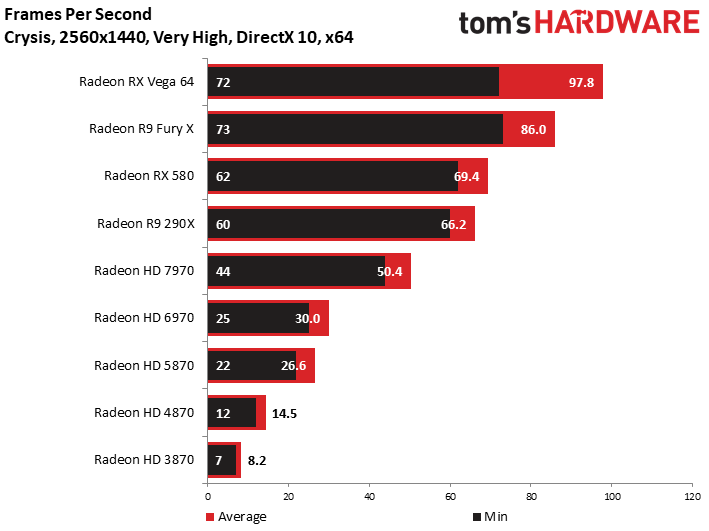
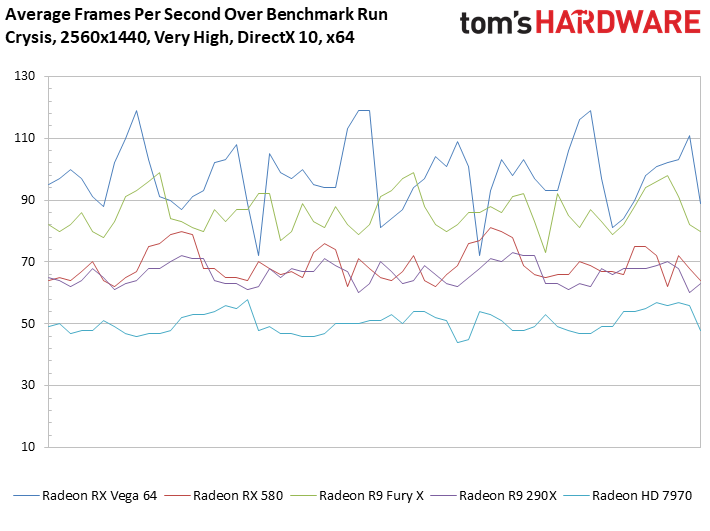
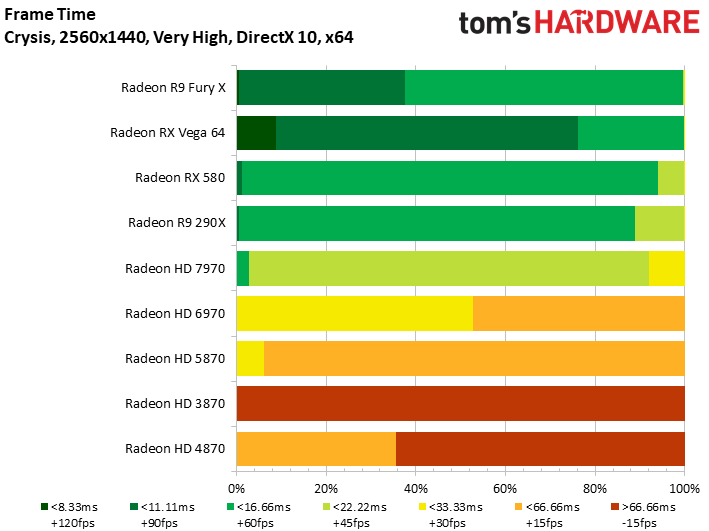
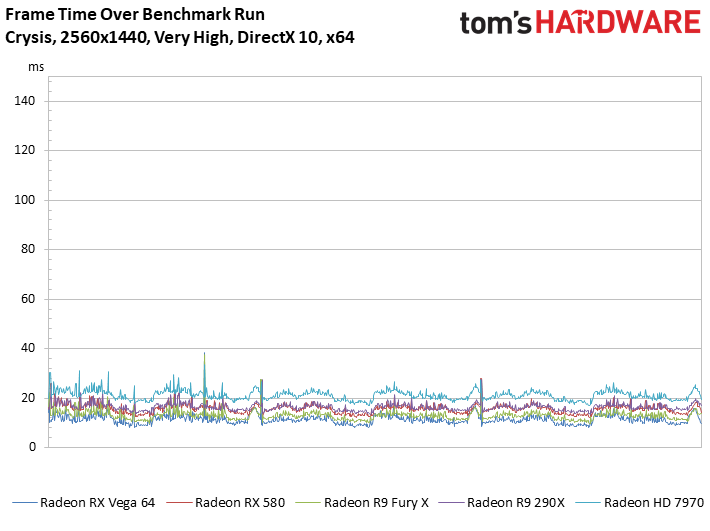
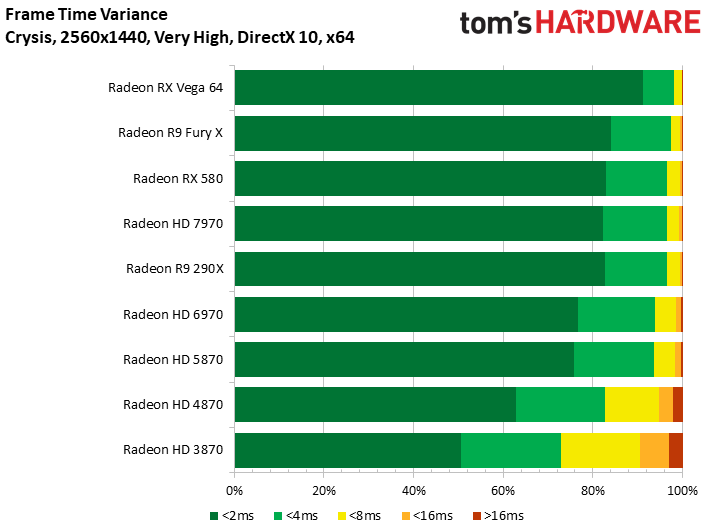
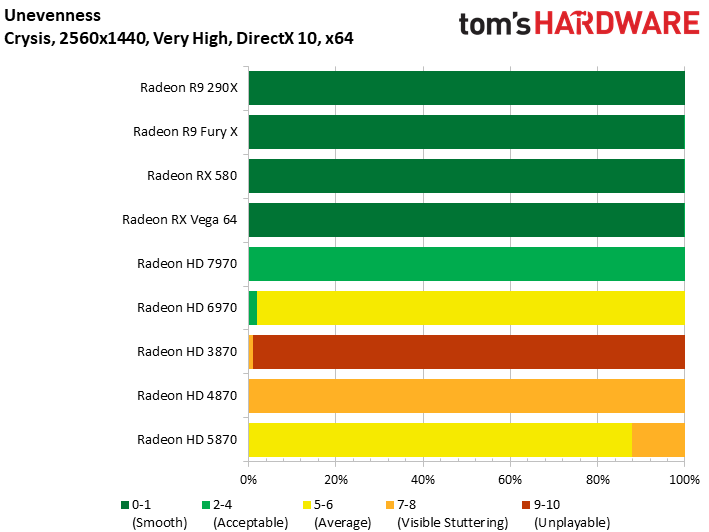
At 1920x1080, the four fastest AMD graphics cards were bunched into a <10 FPS group. But 2560x1440 is taxing enough to spread the field.
Radeon RX Vega 64 is about 14% faster than R9 Fury X, which is almost 30% faster than R9 290X. In turn, the Hawaii-based card is more than 31% faster than Tahiti. AMD’s first GCN-based board establishes an astounding 68% lead over Cayman. That kind of generational scaling is typically unheard of.
Similarly unbelievable is the fact that, 10 years after Crysis’ release, AMD’s fastest graphics card (with 18.7x as many transistors as the RV670 XT available in 2007) cannot break an average frame rate of 100 FPS at 2560x1440. It's about 11x faster than Radeon HD 3870, if that's any consolation.
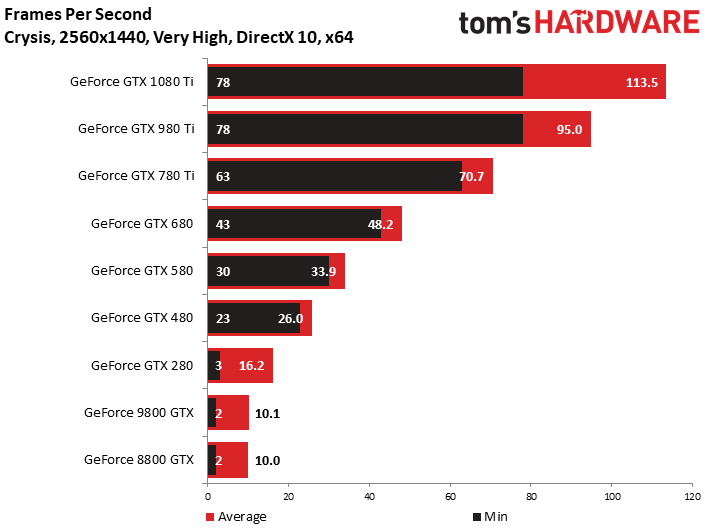
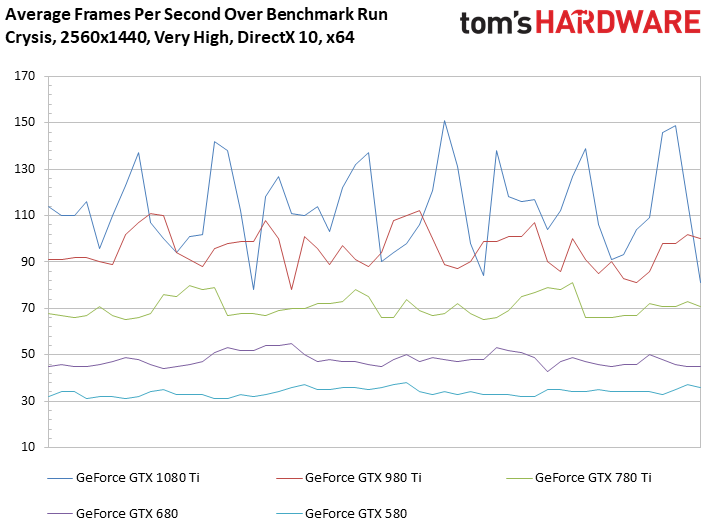
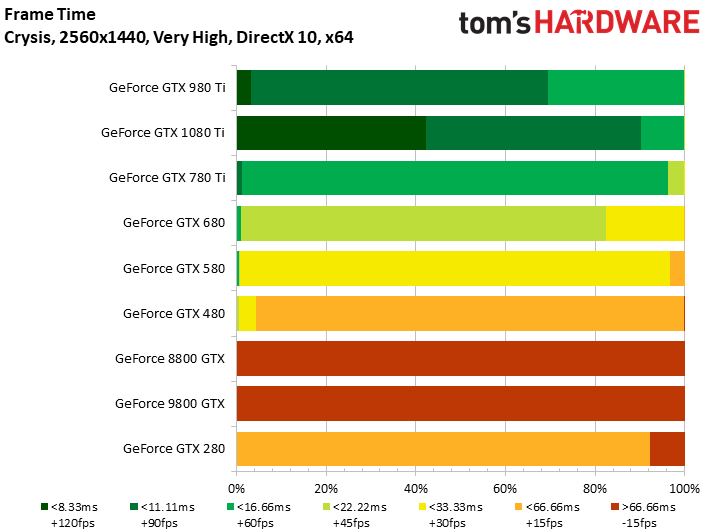
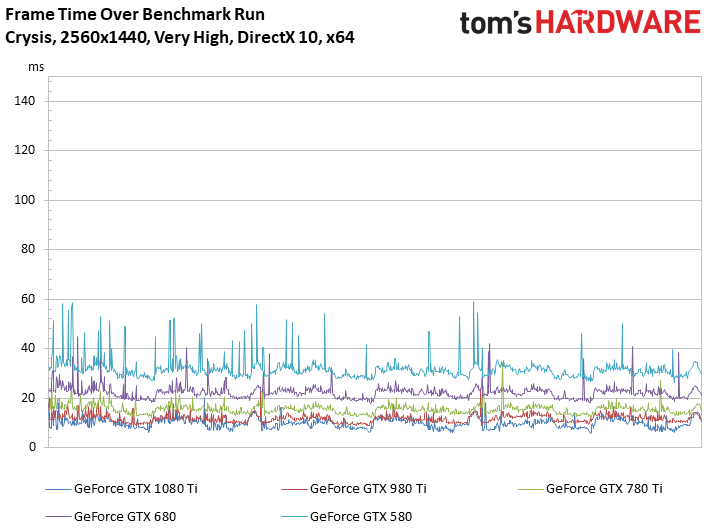
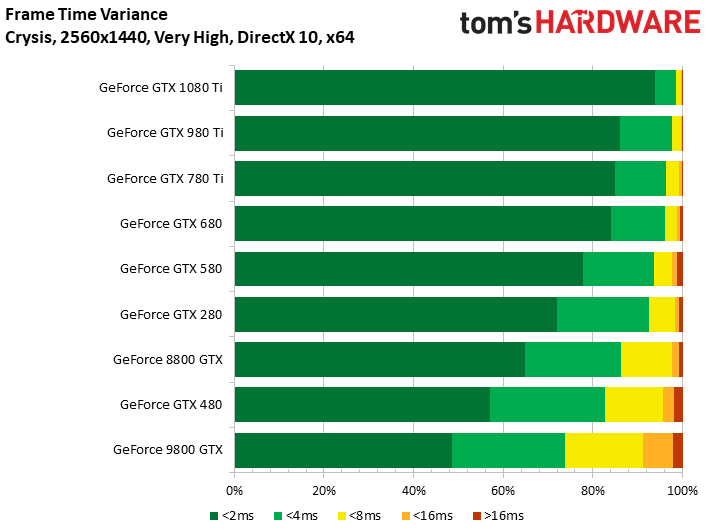
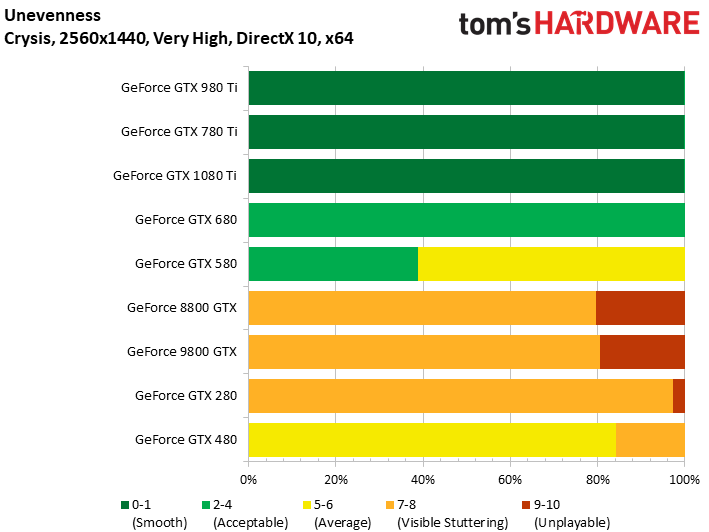
A higher resolution has the same effect on Nvidia’s line-up. GeForce GTX 1080 Ti approaches a 20% lead over 980 Ti, which is 34% faster than 780 Ti. That card’s almost-47%-higher average than GTX 680 gets us back to 2012—and perhaps the slowest card you’d want to use for playable frame rates using Crysis’ Very High quality preset.
Now that we’re beyond platform/software bottlenecks, let’s see what anti-aliasing does to performance at 2560x1440.
8x Anti-Aliasing Results
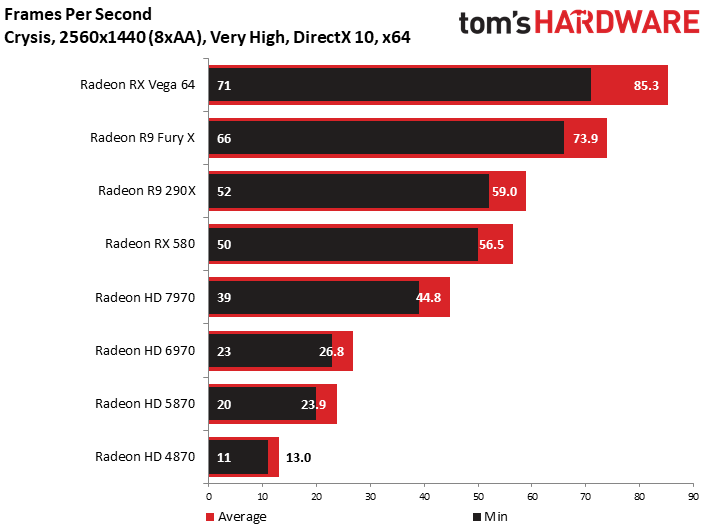
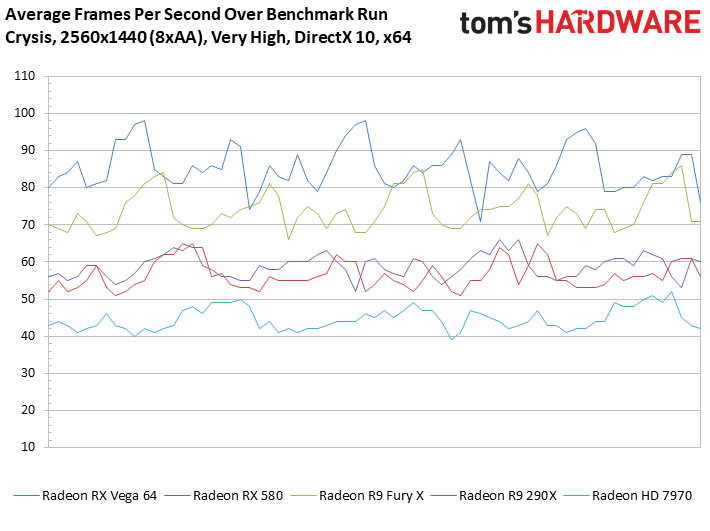
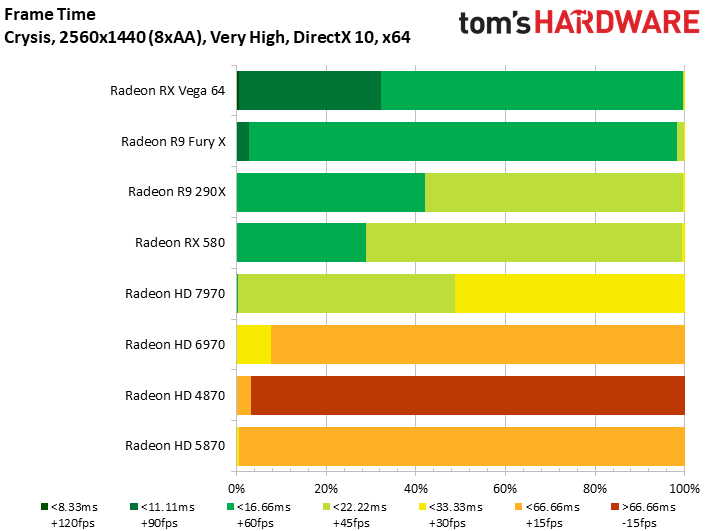
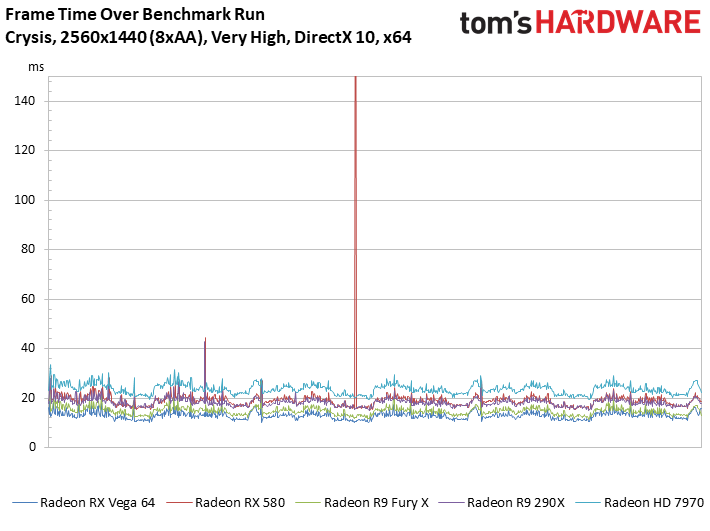
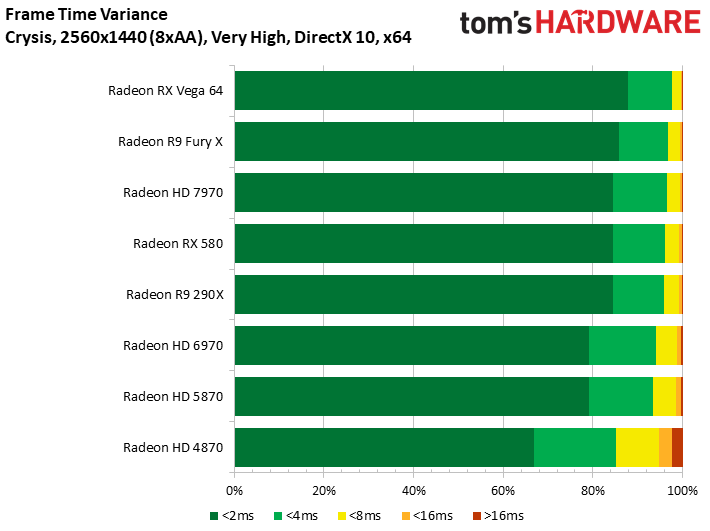
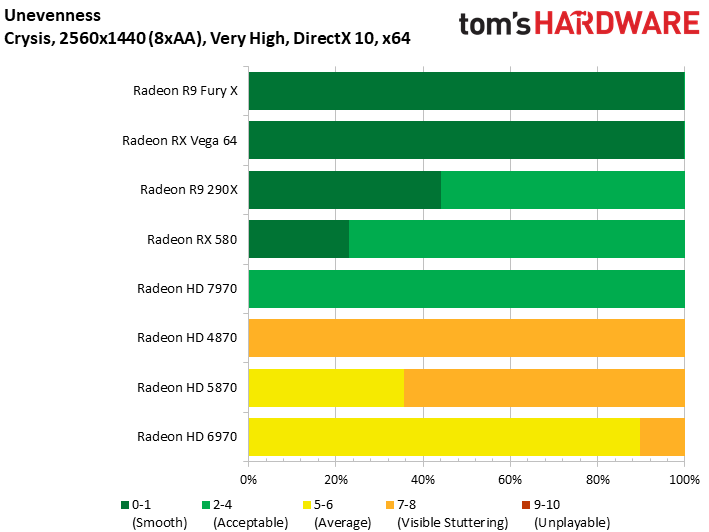
It takes a Radeon R9 290X to average ~60 FPS in Crysis at 2560x1440 with 8xAA. And that’s an ~11% hit compared to the frame rates we recorded without anti-aliasing.
But the most interesting event, by far, is Radeon HD 7970’s victory over 6970. That shift from TeraScale 3 to GCN had major implications for AMD. GeForce GTX 680 might have absorbed some of the Tahiti GPU’s limelight at the time. But in retrospect, it was architectural milestone.
Get Tom's Hardware's best news and in-depth reviews, straight to your inbox.
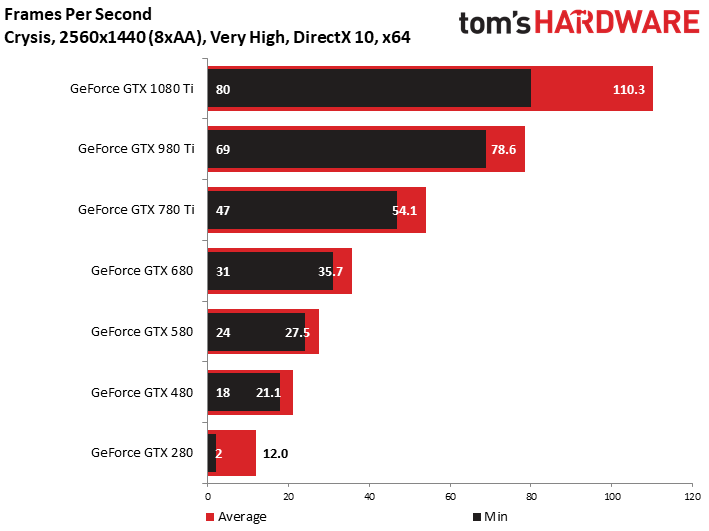
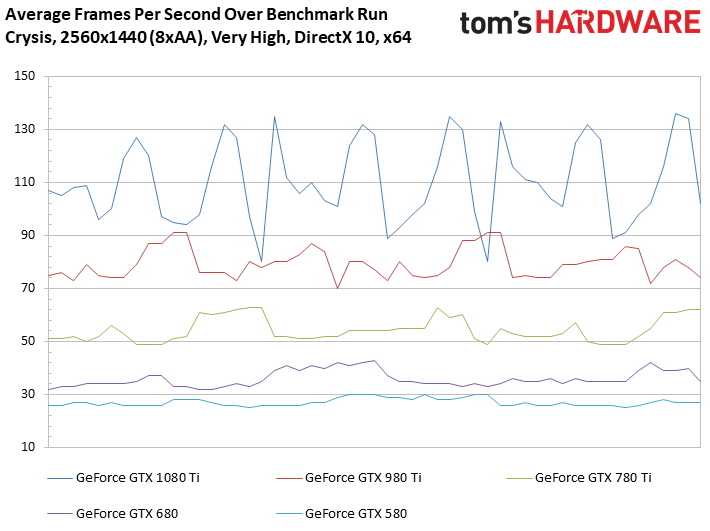
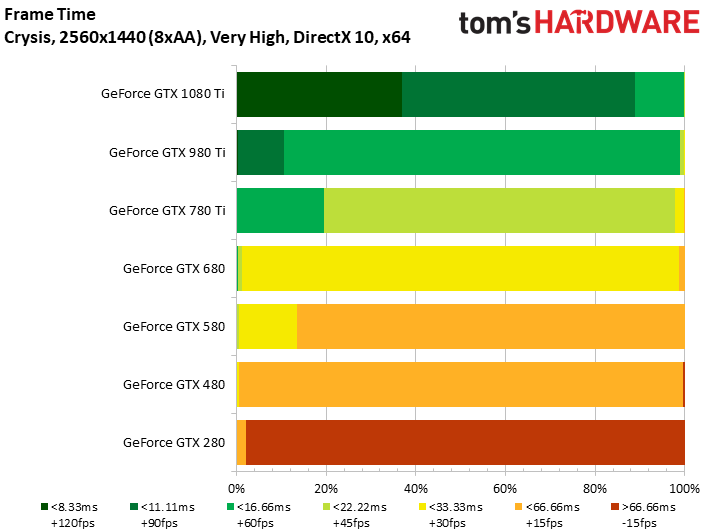
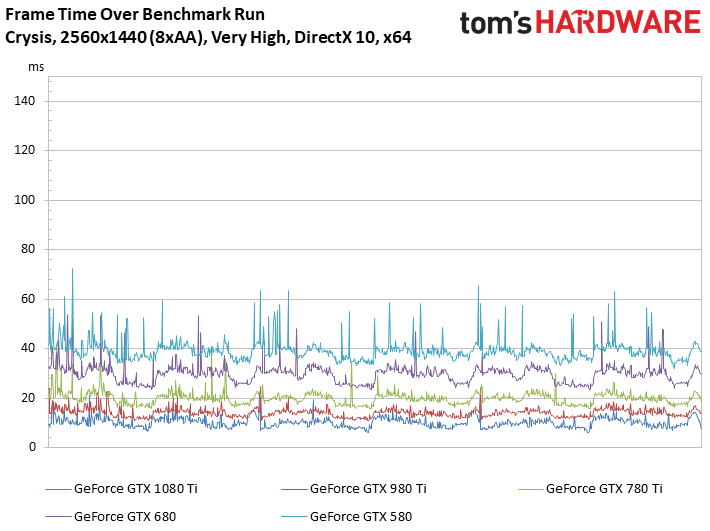
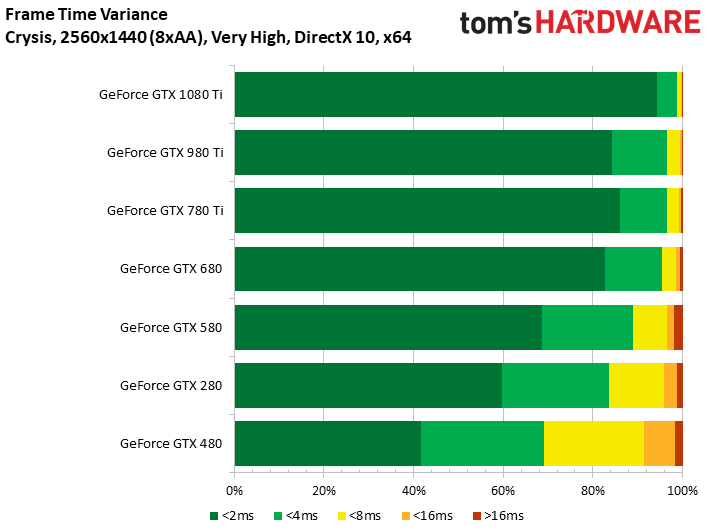
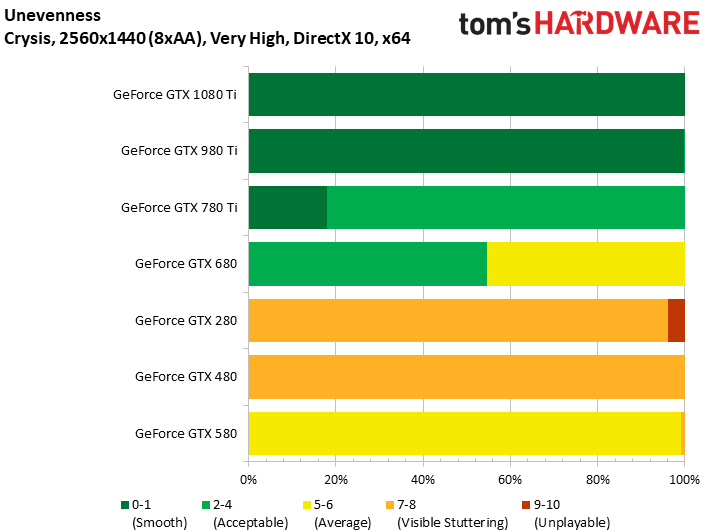
Nvidia’s GeForce GTX 1080 Ti maintains an average in excess of 110 FPS with 8xAA applied, hardly skipping a beat compared to its result without anti-aliasing.
Lower-end cards take a more pronounced hit: GeForce GTX 980 Ti achieves roughly 83% of its AA-free performance, while the 780 Ti manages ~77% of its average frame rate compared to 2560x1440 with no anti-aliasing. The loss is even worse for GeForce GTX 680, which slows down so much that you wouldn’t even want to run at these settings.
MORE: Best Graphics Cards
MORE: Desktop GPU Performance Hierarchy Table
MORE: All Graphics Content
-
lun471k Quite interesting. I wonder how the rest of this generation's GPUs would compete in a Crysis benchmark!Reply -
Luis XFX This is awesome! Good work! I've always wondered how today's most powerful GPUs would handle Crysis. Crazy to see that even the GTX 1080ti still barely breaks 60fps at 4K. This game is a beast.Reply -
envy14tpe Wawawow. Love this comparison. Never seen anyone do this..seriously. Once again Tomshardware is the best.Reply -
wh3resmycar 10 years ago i debated someone in the forums that Crysis was crap since his supposed rig ran Unreal 3 games and COD4 just fine. i wonder if that guy is still here. i mean side by side circa 2017 put Crysis along COD4 you'd see and probably understand why the latter was so much ahead of its time. The Map scale and the physics, too.Reply -
gasaraki So the question "But can it run Crysis?" still applies. Only one card can run crysis at 4K above 60fps.Reply -
Kridian What would really be interesting is if they redid Crysis with Chris Robert's updated engine (Star Engine/Lumberyard). What kind of performance gains would we see from a software standpoint?Reply
-
hdmark can anyone give me a clean cut answer as to why crysis was/is so demanding? Is it that they took all of the new graphics technologies at the time and put them into one game? and then over time those technologies matured/were optimized and now we can see games that are better for less?Reply
was it just poorly optimized?
-
jonajohnson3 Right now im playing games like Gmod and Tf2 qute well with a 11 year old pc! Yes they might be really old titles to but they still run well. So for me yes I can run a 11 year old pc.Reply -
DataMeister @HDMARK, I think the game engine for the original Crysis was just poorly optimized, because Crysis 2 ran better on the same hardware.Reply -
therickmu25 There will never be another Crysis. Imagine a developer releasing a game where a 1080ti couldn't run it on the highest settings in 2017. 1. Optimization played a factor I know, but 2. Because it looked 20x better than any game available.Reply
It was a product of the times where developers were still trying to push the envelope for cutting edge graphical techniques.. Pretty cool

